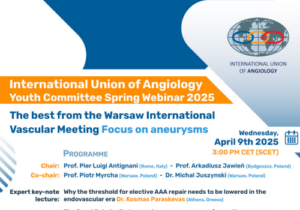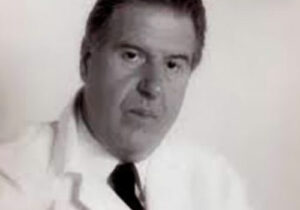In 2008 in Athens the final text of the GLs was approved and submitted for publication in International Angiology where it came out at the end of 2009. Soon afterwards I suggested within the IUA to use those GLs to certify the high quality of multidisciplinary cares administered in some VCs of excellence. The idea was to provide a supranational accreditation to VCs worth of it in order to promote the best vascular cares and encourage other groups to do their best and improve their activity and reach accreditation. Second purpose was also to discourage, and possibly isolate, monospecialty centers, mostly those where treatment is carried out in a single direction and by personnel with little clinical expertise. Such a suggestion was embraced by the Management Council of the IUA, approved in Buenos Aires in 2010, and thus a “European Commission for the Accreditation of Vascular Centers” was formed with the mandate to start such enterprise that is providing to highly qualified VCs a certification which runs well beyond the borders of their country and is not biased anyway.
The first VC to apply, being assessed and accredited, came from Castelfranco Veneto General Hospital in Italy, and no wonder since its “leader” is Prof. Adriana Visonà, a nice lady and excellent and known angiologist, who became President of the European Society of Vascular Medicine and runs a department were also open surgery and endovascular treatment are first class and operate in very close collaboration.
Many other centers applied but I like to emphasize here that there was good representation from the eastern European countries which, may be, had to regain some ground. Let me signal among them the VC of the Silesia University Hospital in Katowice, Poland, which was assessed in 2015, where its leaders Professors Krzysztof Ziaja and Tomasz Urbanek (surgeon and angiologist) are doing an outstanding work with multidisciplinary involvement in the most updated facilities and equipments.
Then let me rejoice for the recent applications of two VCs in Italy. One came from the General Hospital of Cosenza, down the south where working is hard and where its “leader” Prof. Francesco Intrieri, a vascular surgeon, started the first specialist cares in this field some 10 years ago and in collaboration with a medical colleague built a complete multidisciplinary VC, which is an example for many. The second one came from the University Hospital of Siena, where the “leader” is Prof. Carlo Setacci, no less than Past-President of the European Society of Vascular Surgery, endovascular authority, who pushed very hard to promote a Vascular Medicine service in parallel with his own. This VC, located straight in the middle of Tuscany, in the center of Italy, is visited continuously by many colleagues from various medical professions to learn and update their knowledge and practical expertise in vascular diseases.
Now it should be emphasized that, although some programs of certification are running in some countries, they carry two limitations: firstly, they deal only with their national territory and institutions; secondly, they are focused on only one vascular profession, medical, surgical, or whatever. The IUA accreditation, on the contrary, is a supranational and international program, a unique initiative, granting a certification of high and assured quality to valuable VCs in a multidisciplinary collaboration in the main and exclusive interest of the vascular patients.
There are also practical benefits in the accreditation. Proof of qualification is often instrumental when dealing with health authorities in obtaining priorities, funding and personnel. Teaching appointments in universities may be dependent on the prestige given by the IUA accreditation to the departments/services cooperating in a VC. But the most important decision making subjects will be the patients, who certainly care about the qualifications of the specialists supposed to take care of them. Most of them at present will go through Internet and weight the references of the doctors they are planning to consult. There is the possibility even on emergency to choose where to be referred for hospitalization. A good label means much.
Prof. Fabrizio Benedetti Valentini
European Commission for Accreditation of Vascular Centers, Chairman




